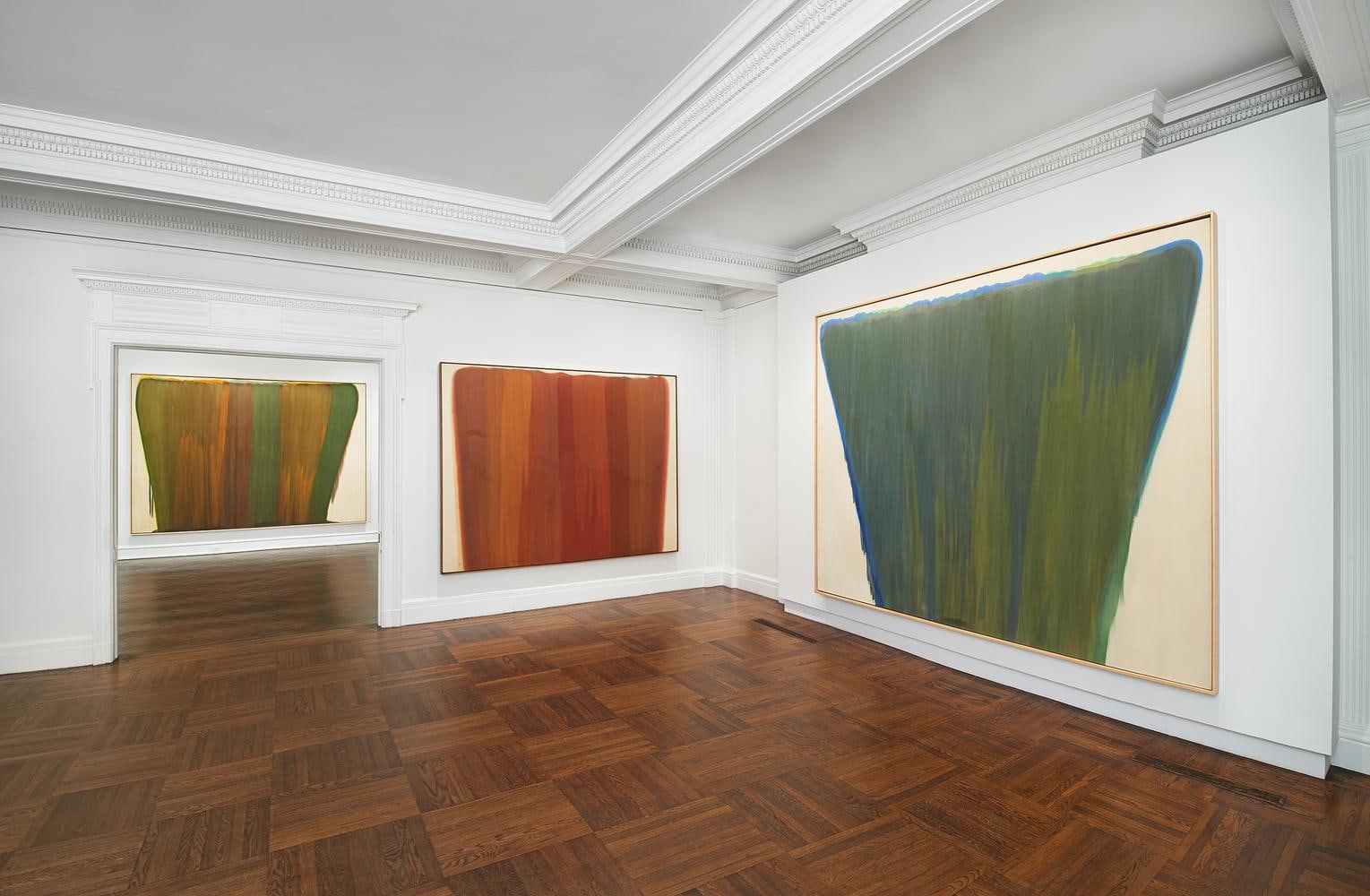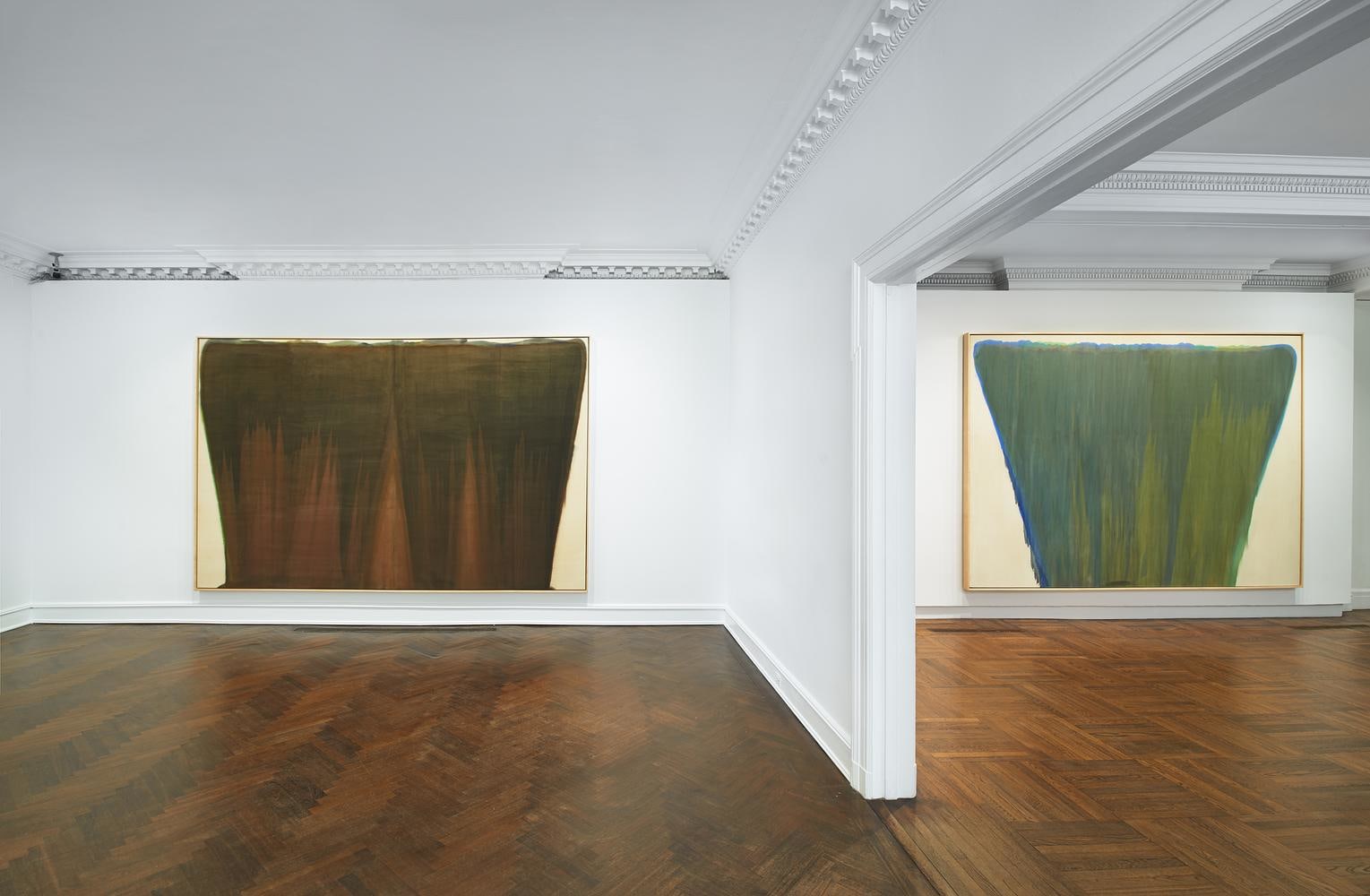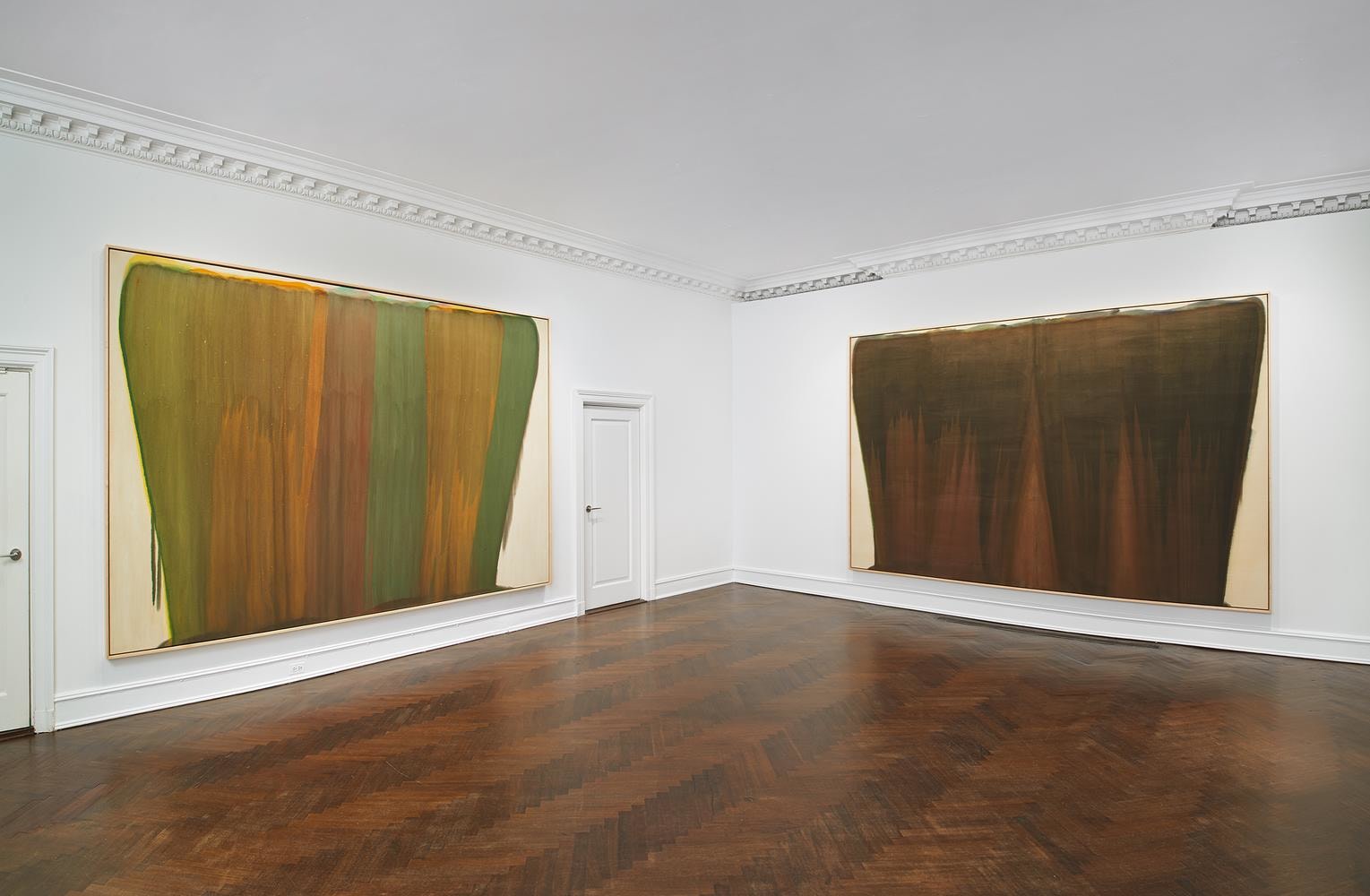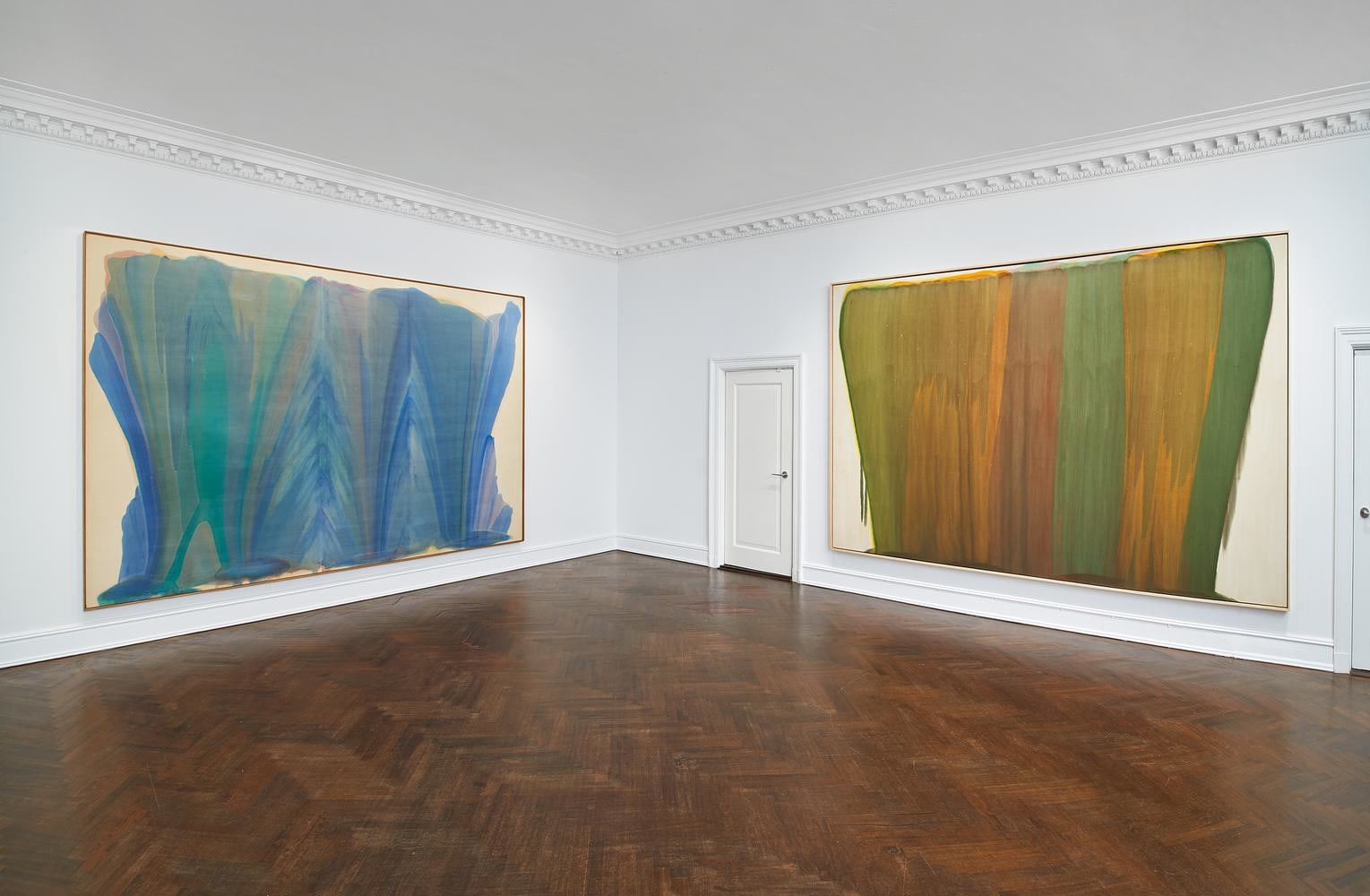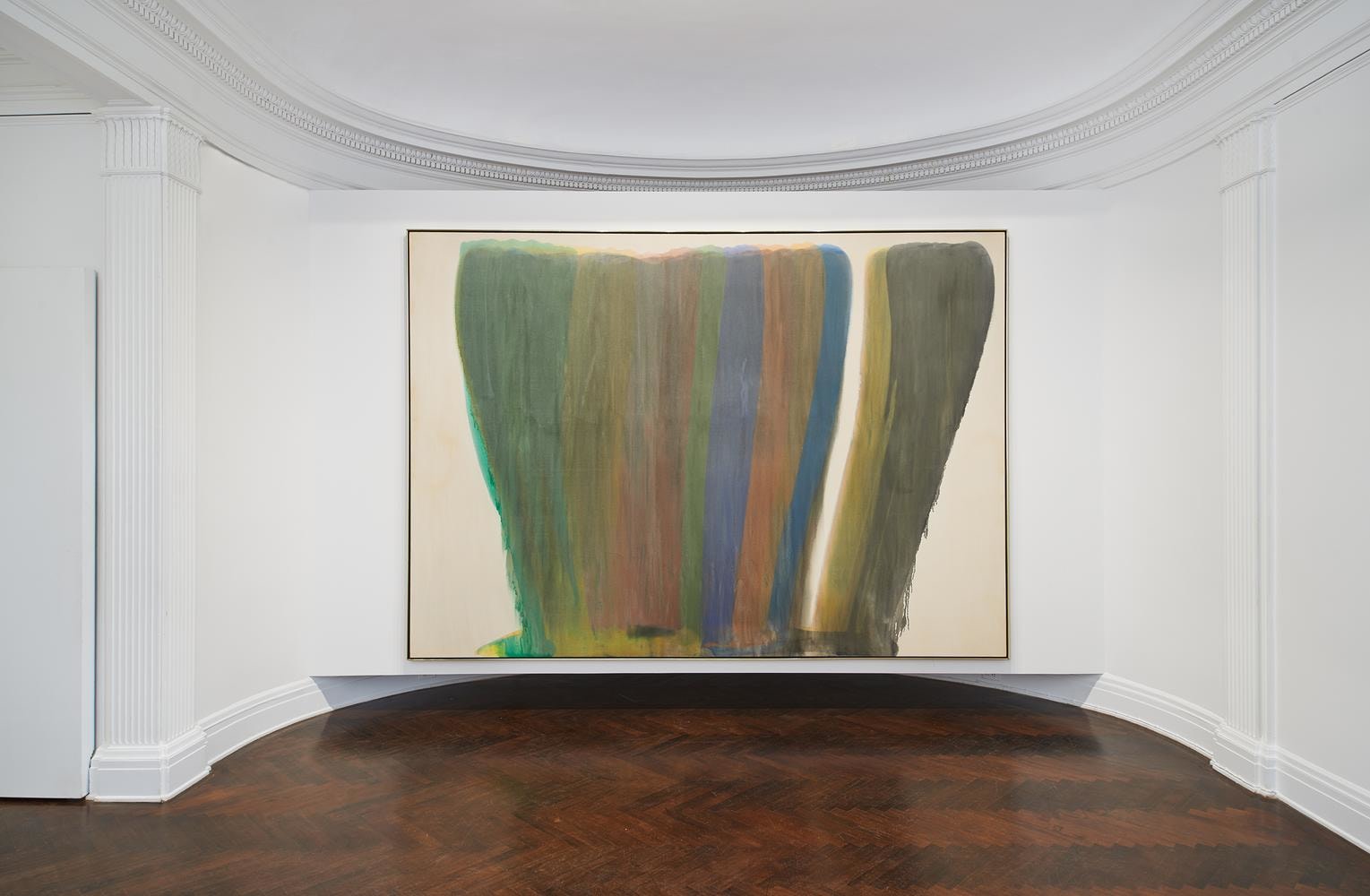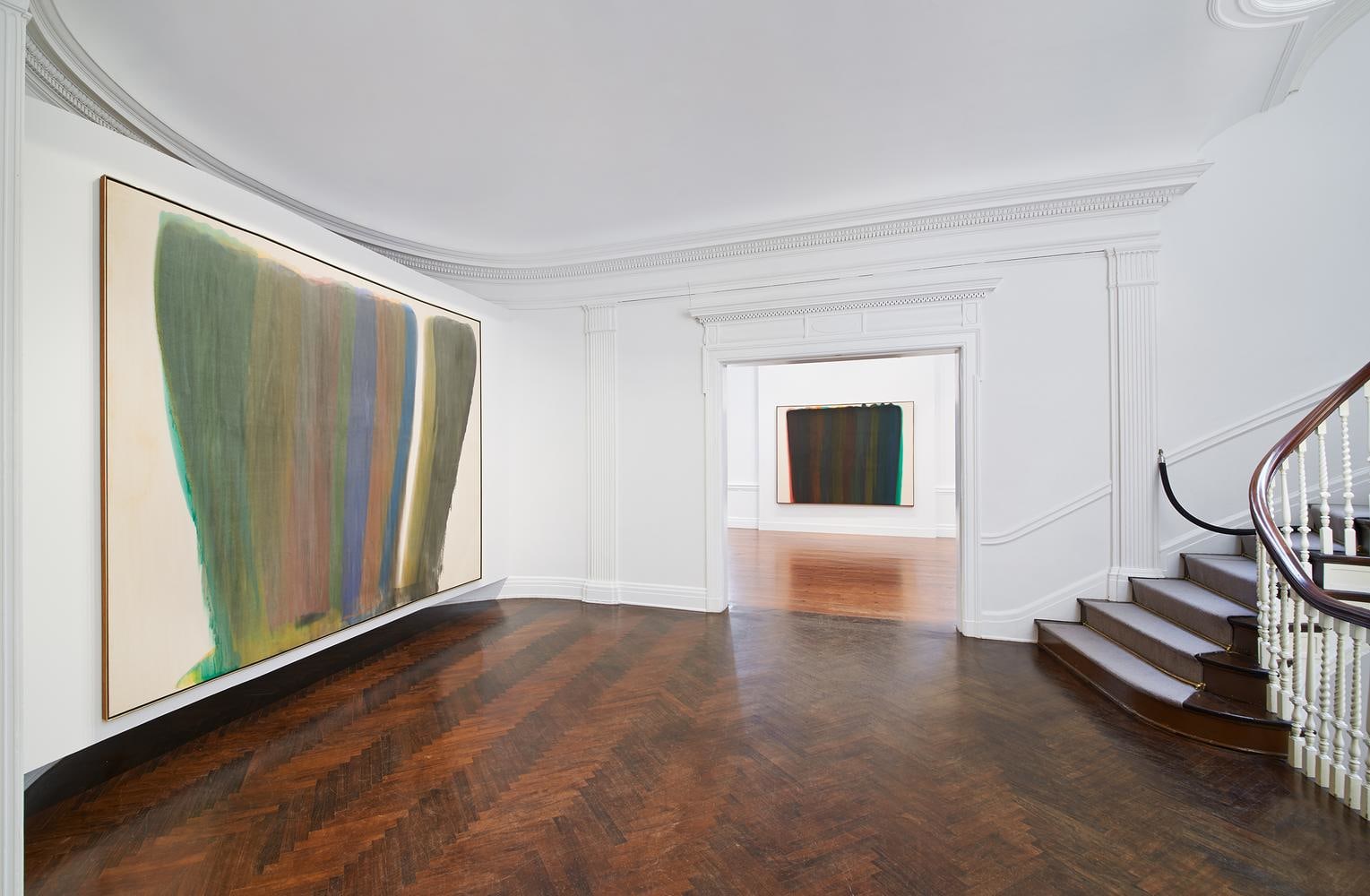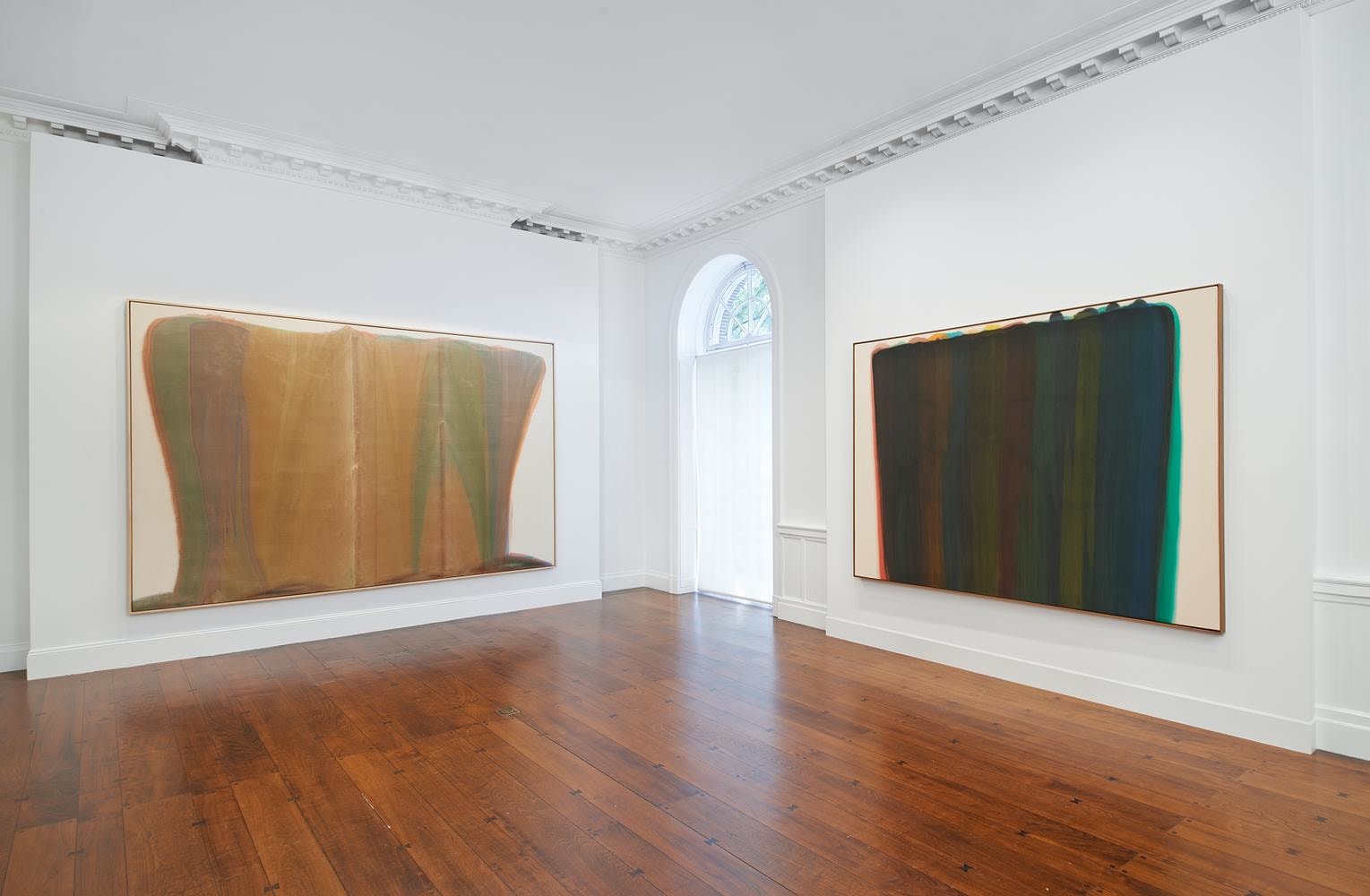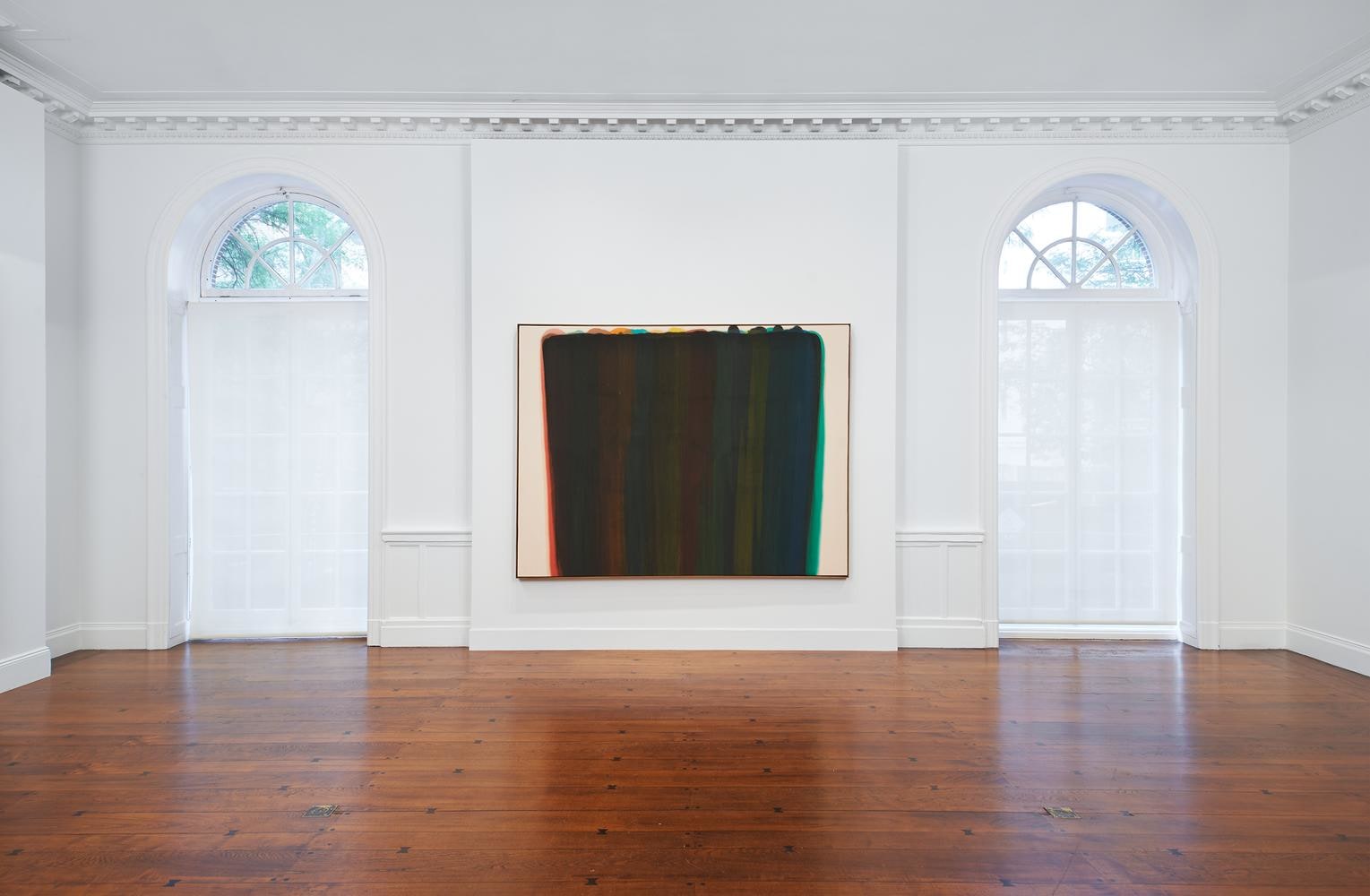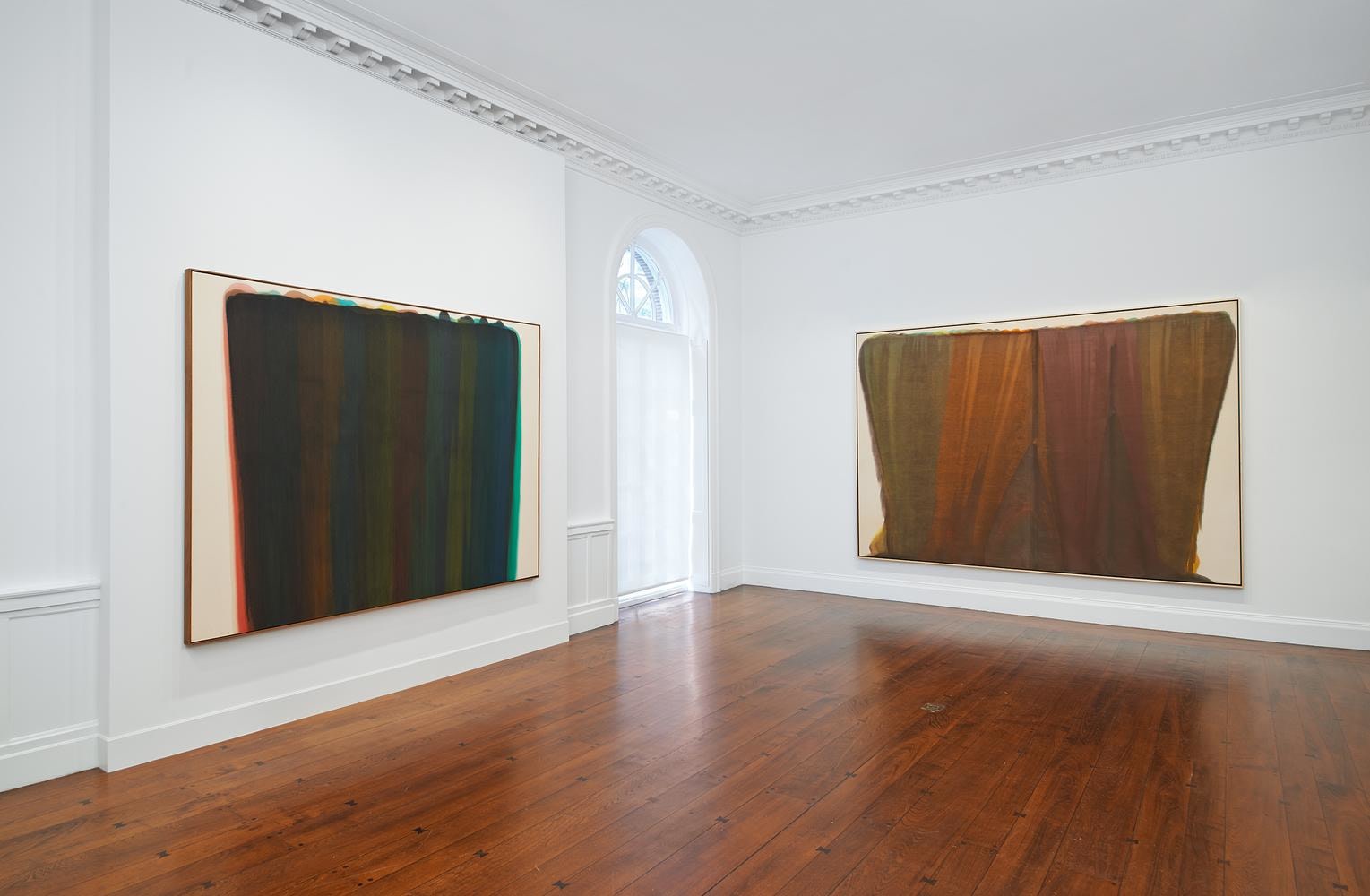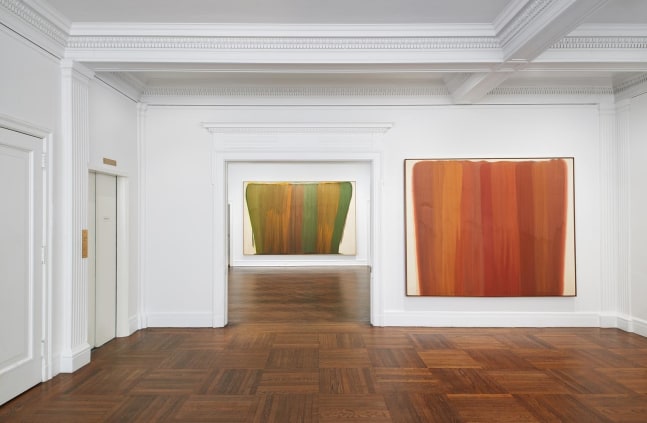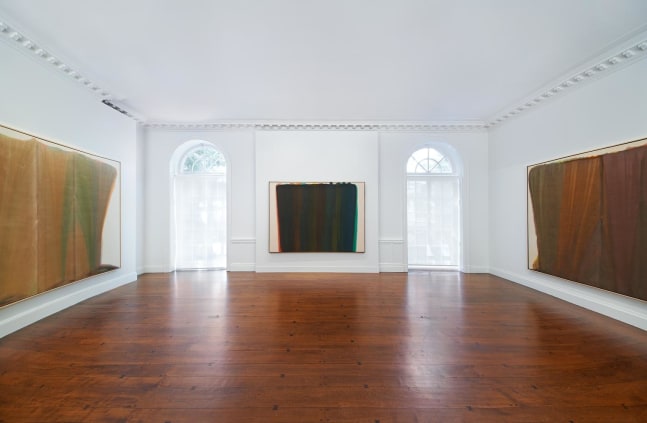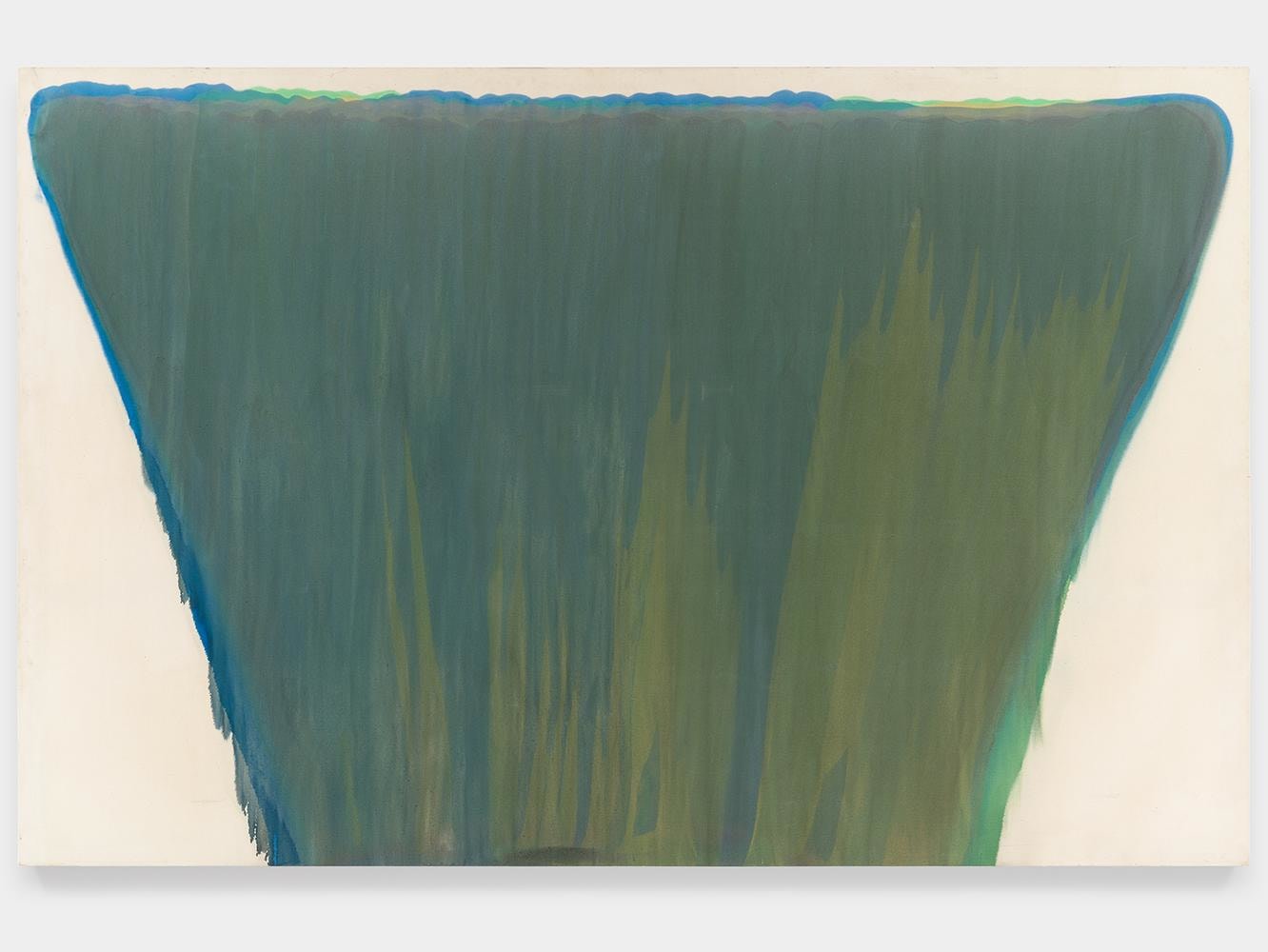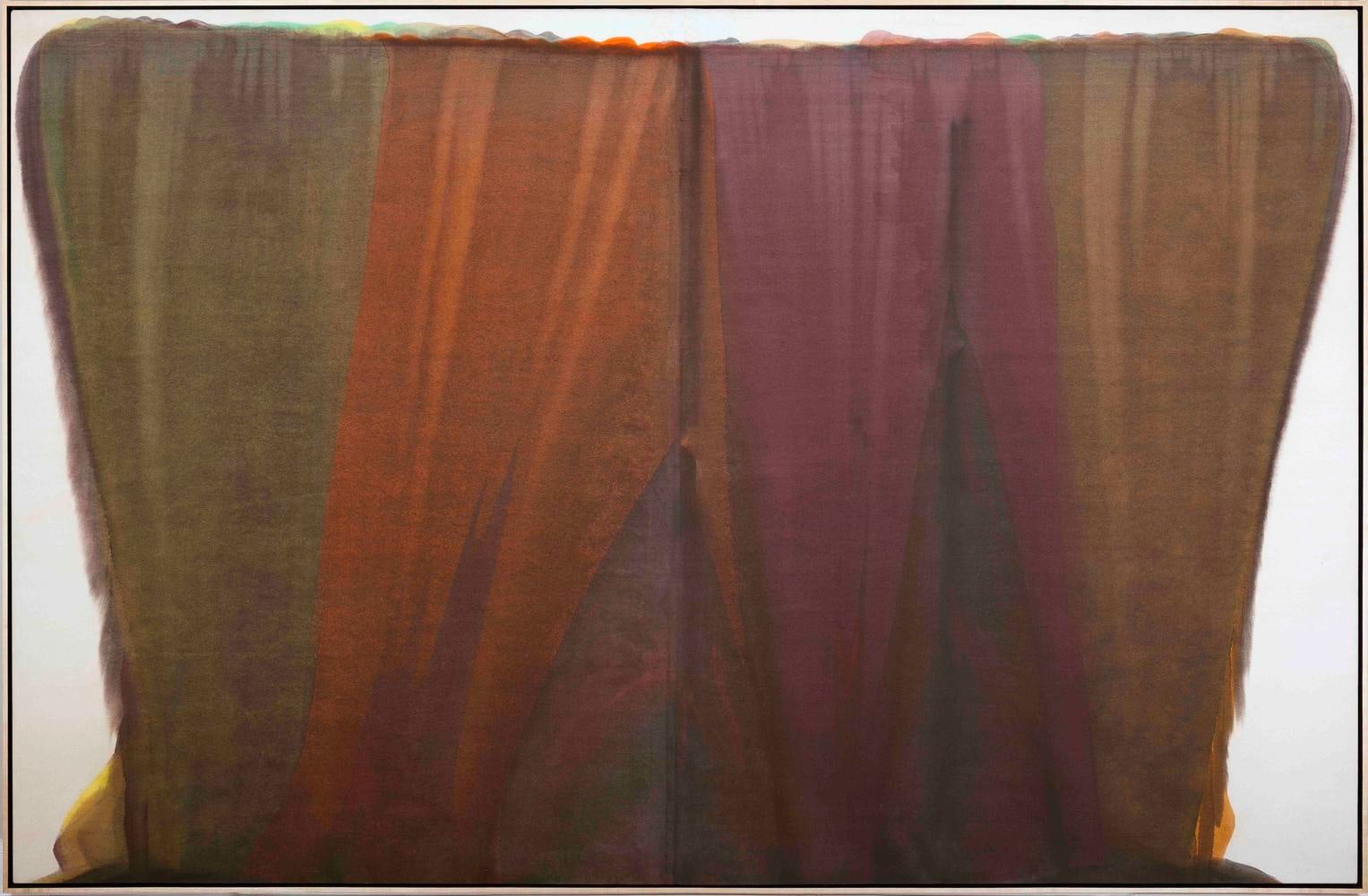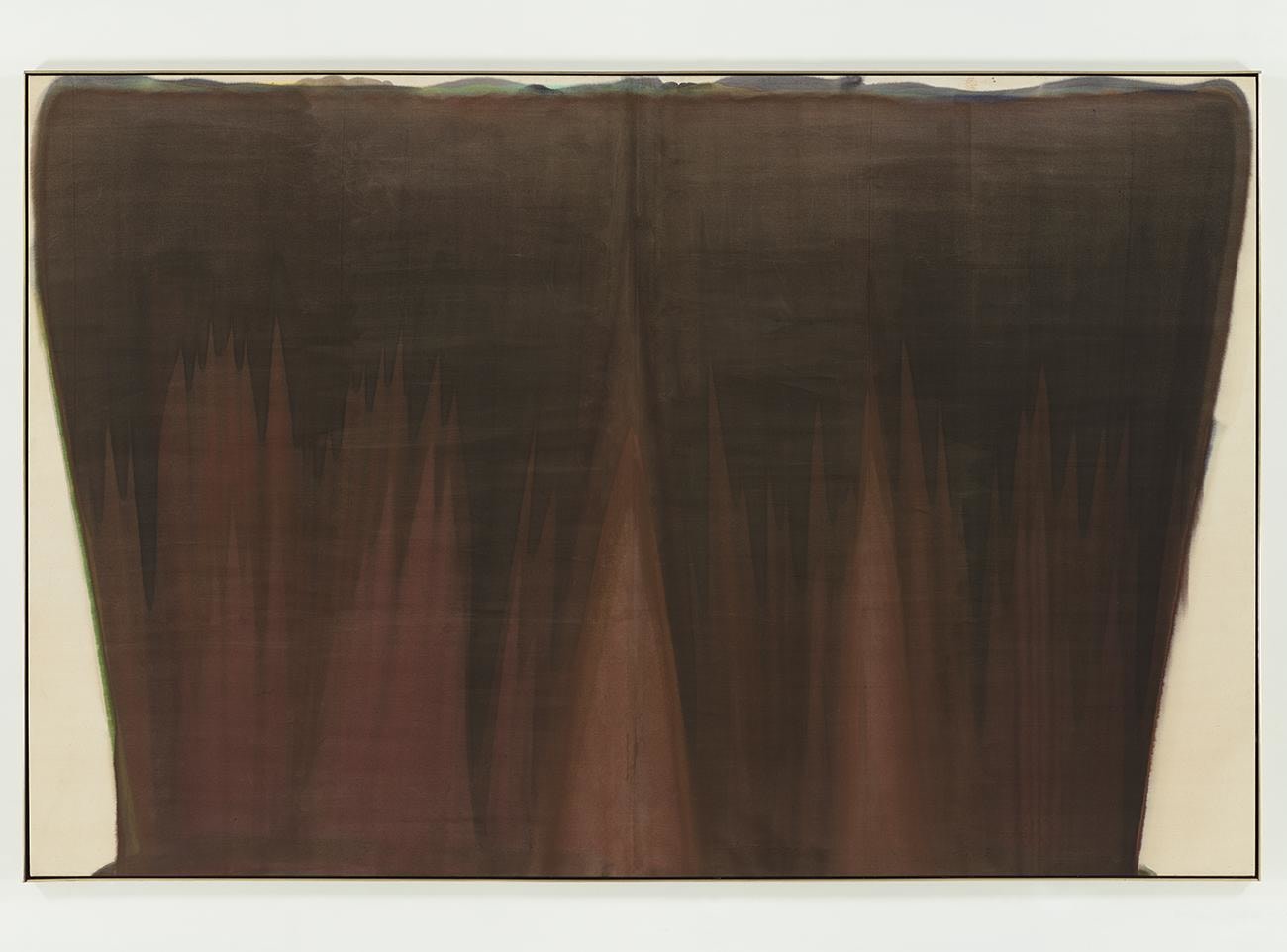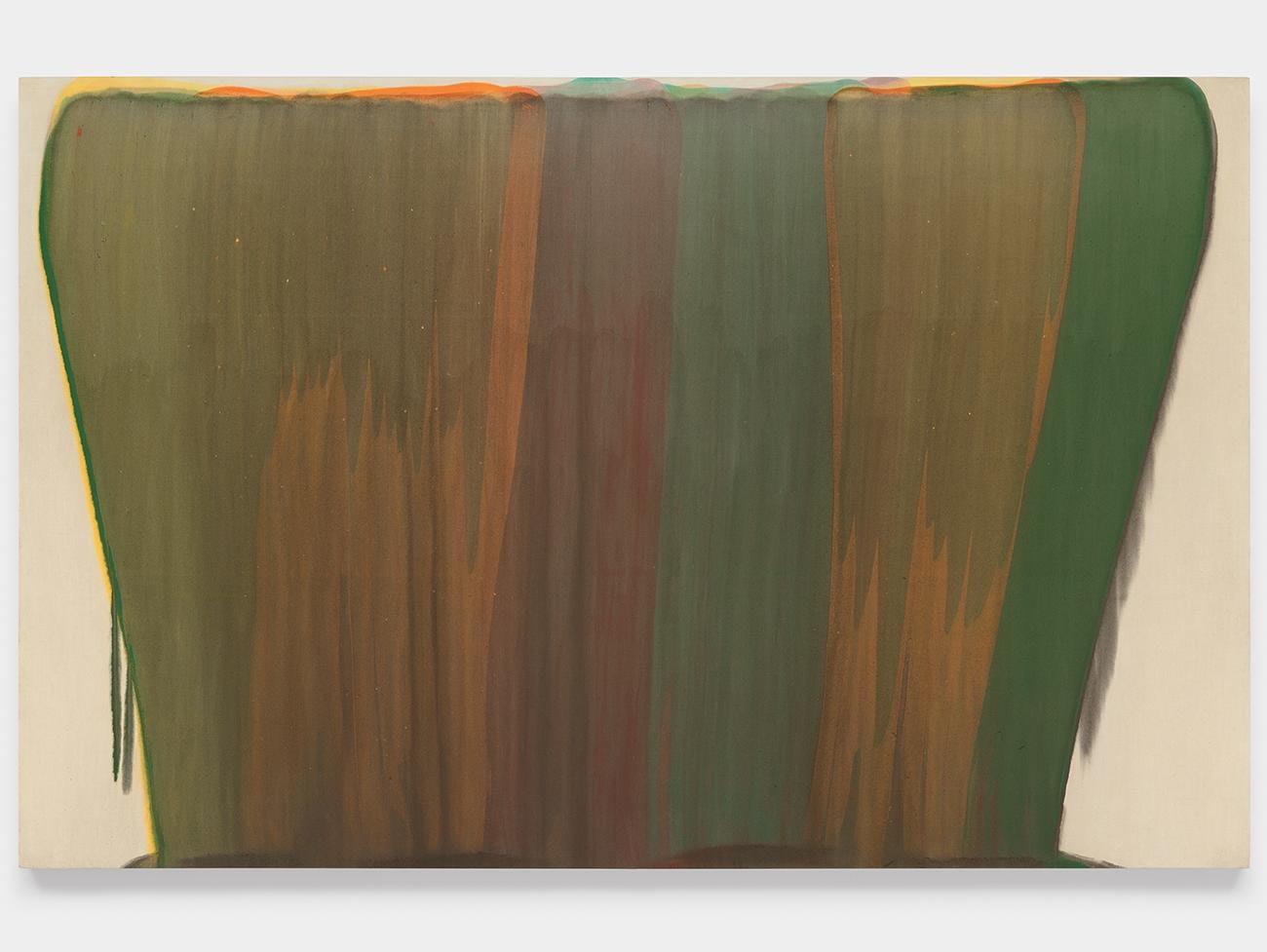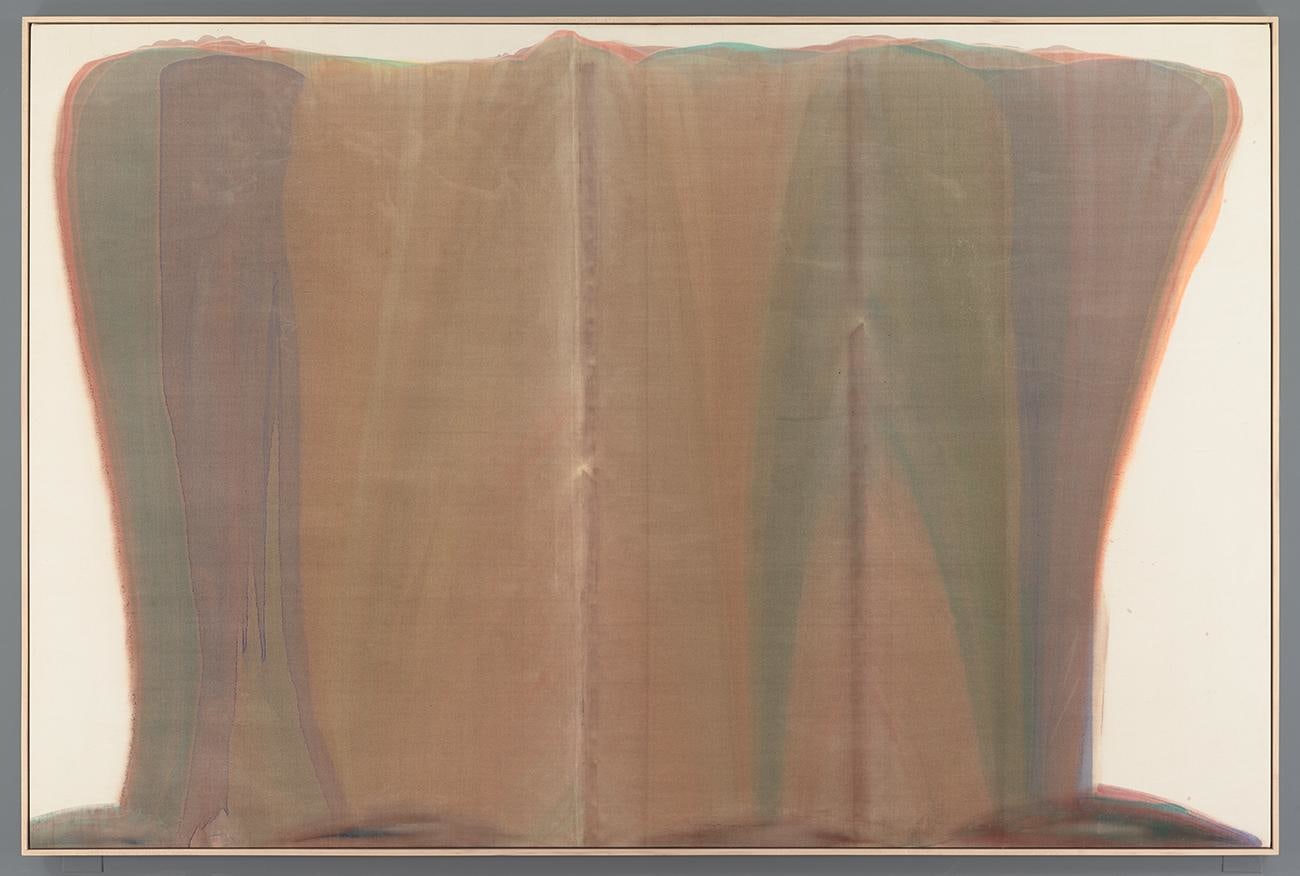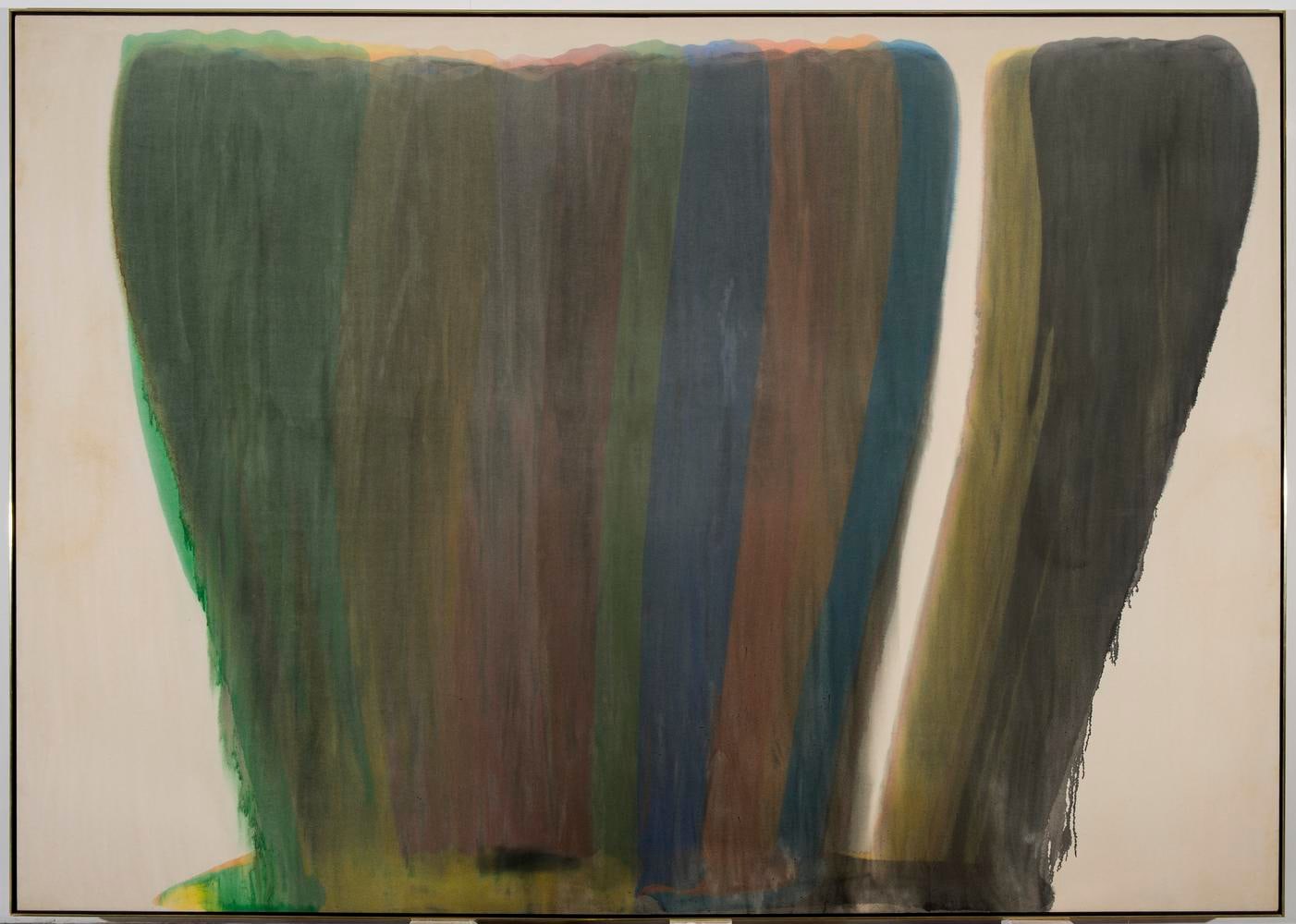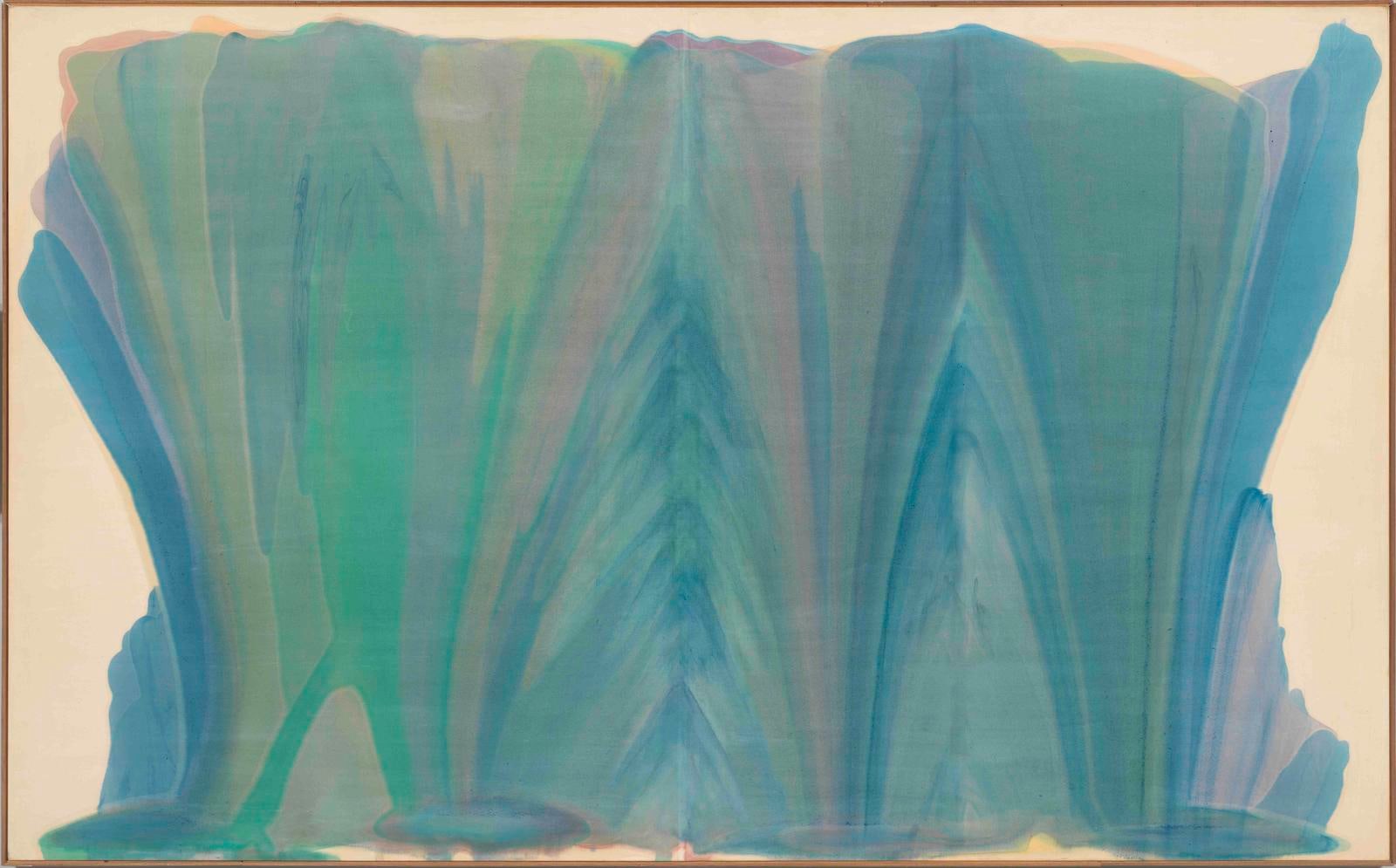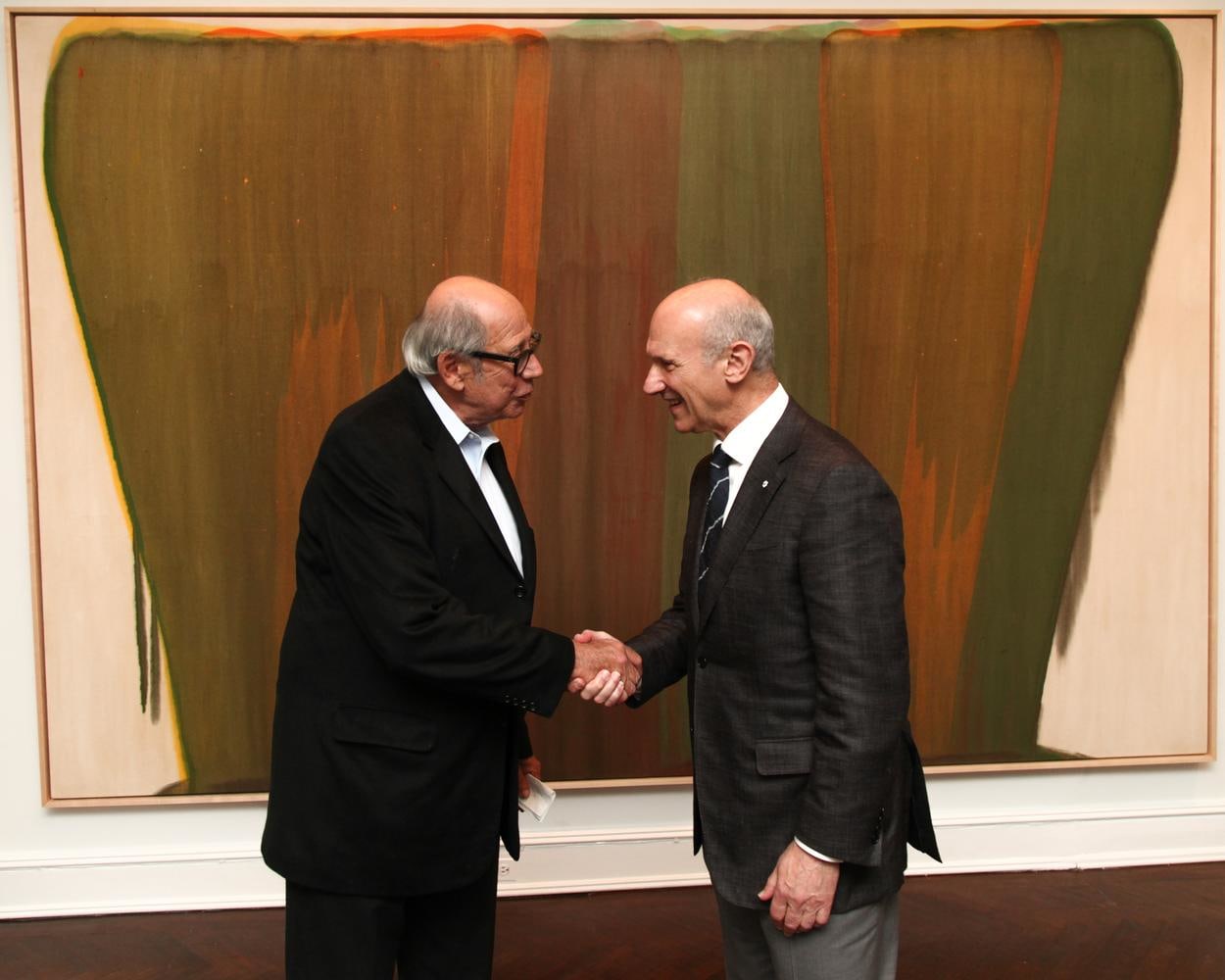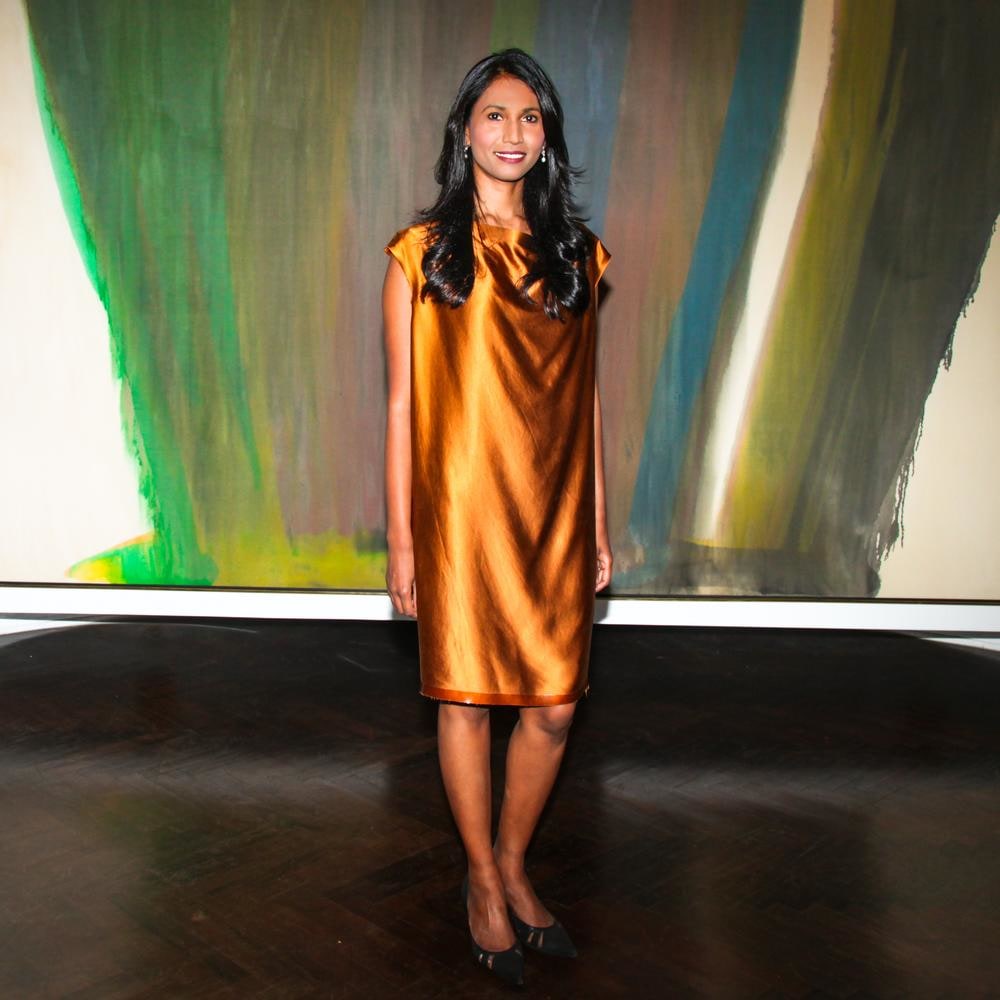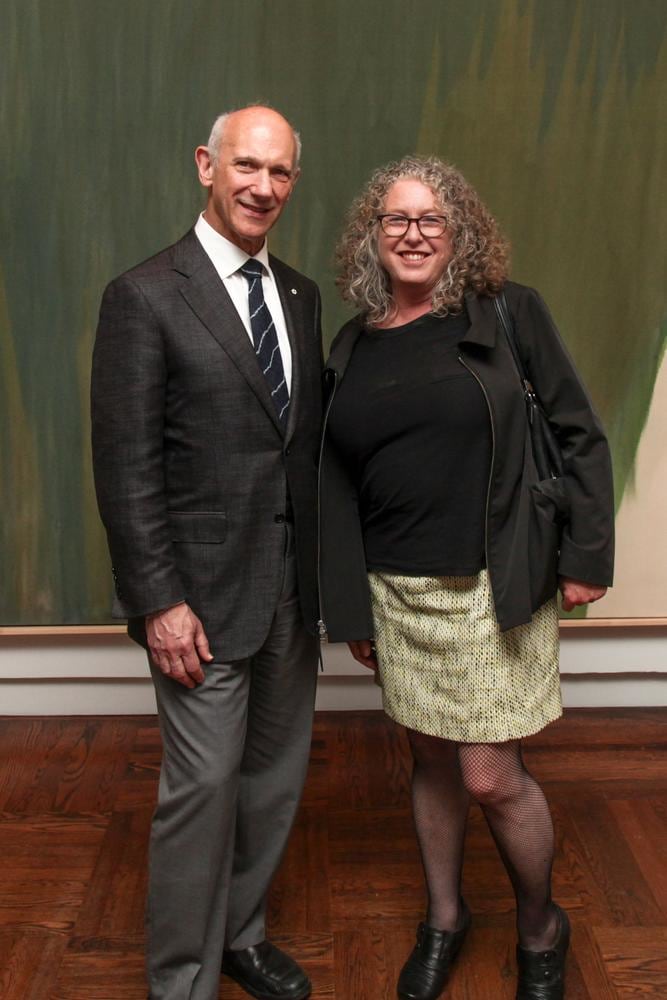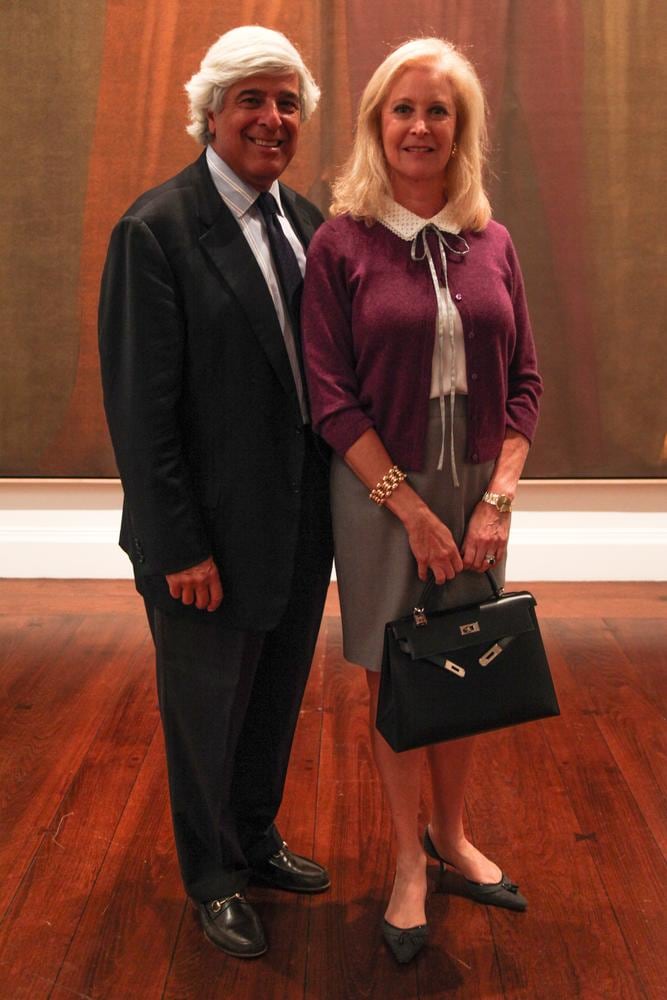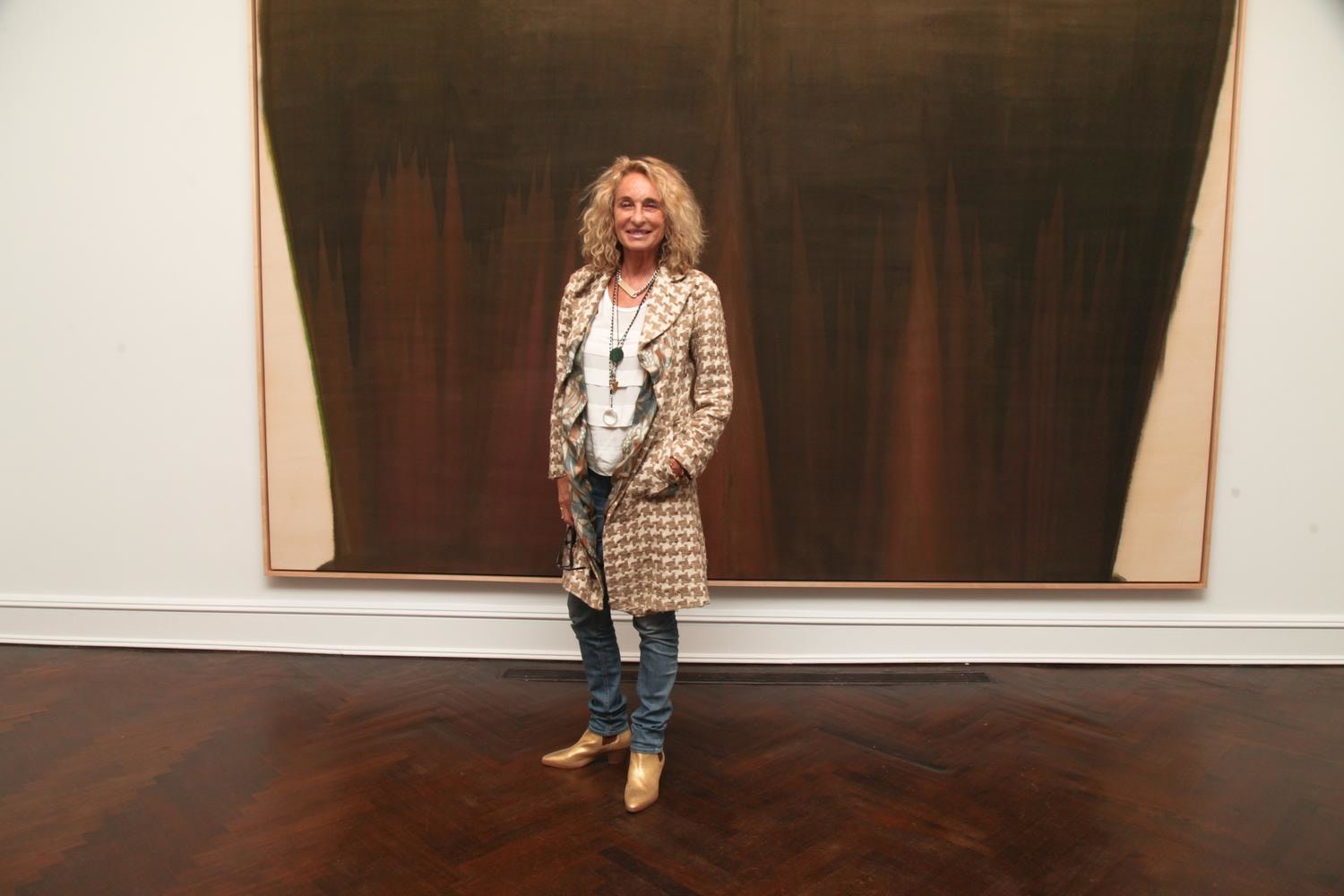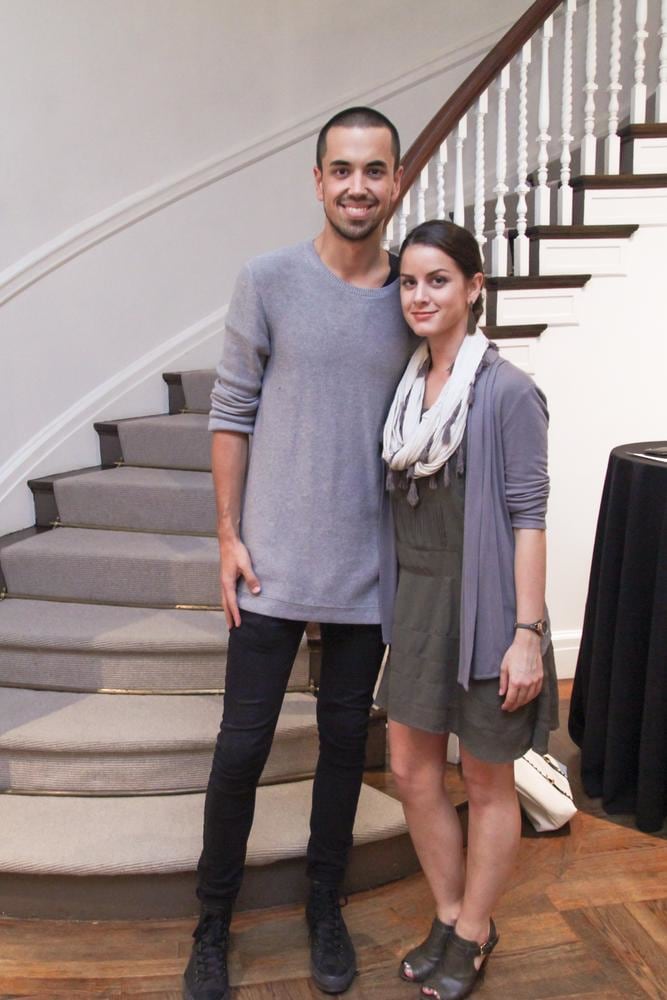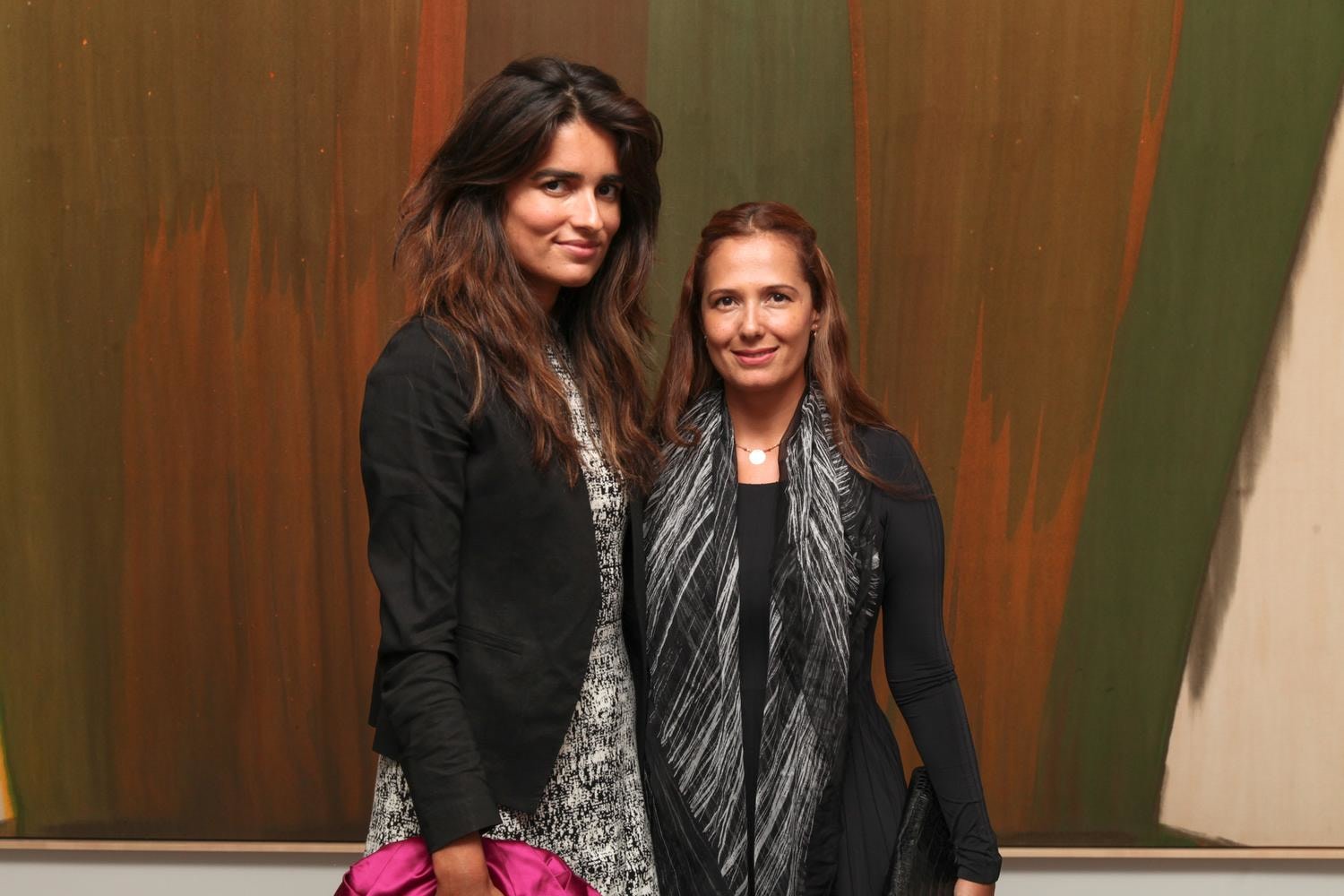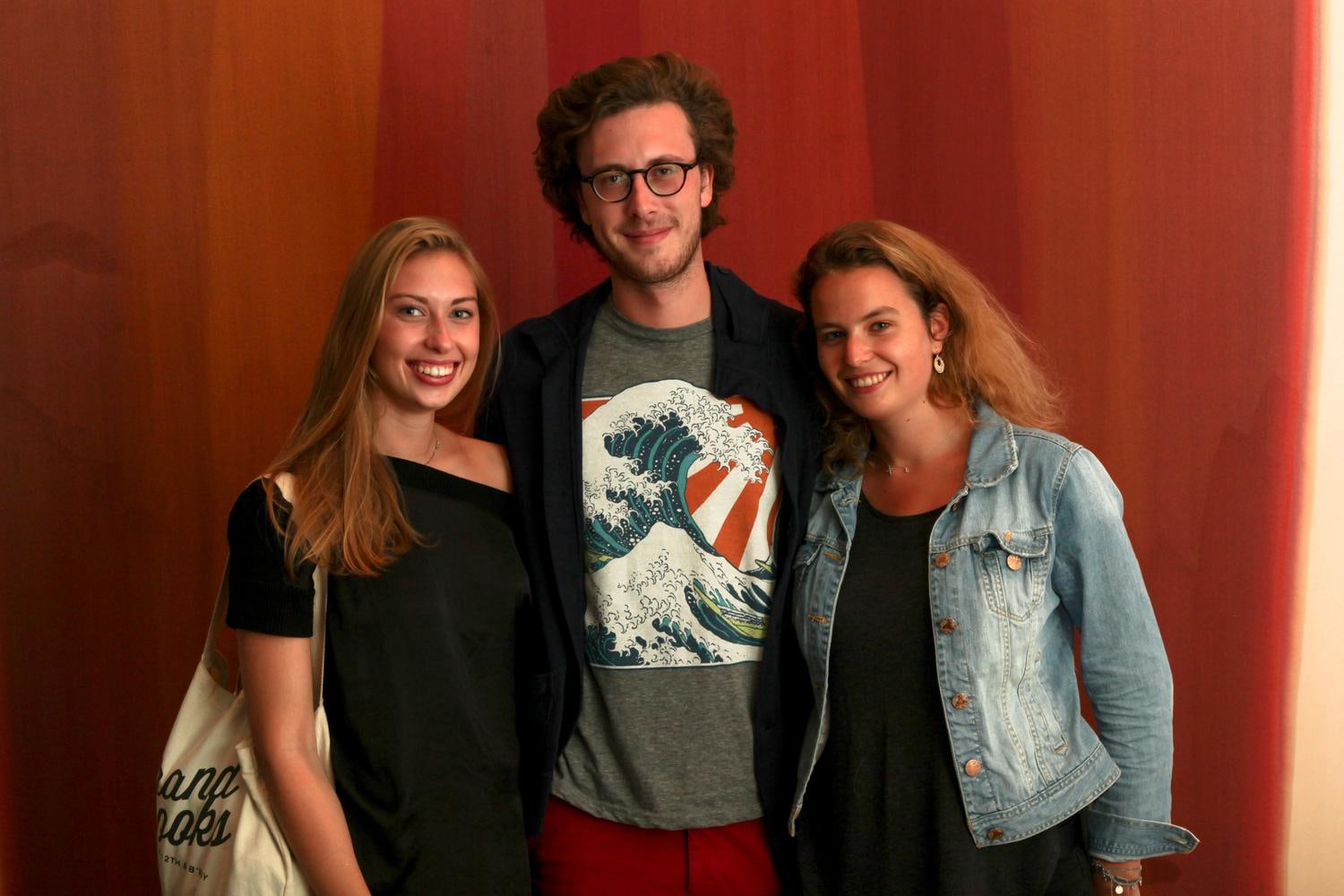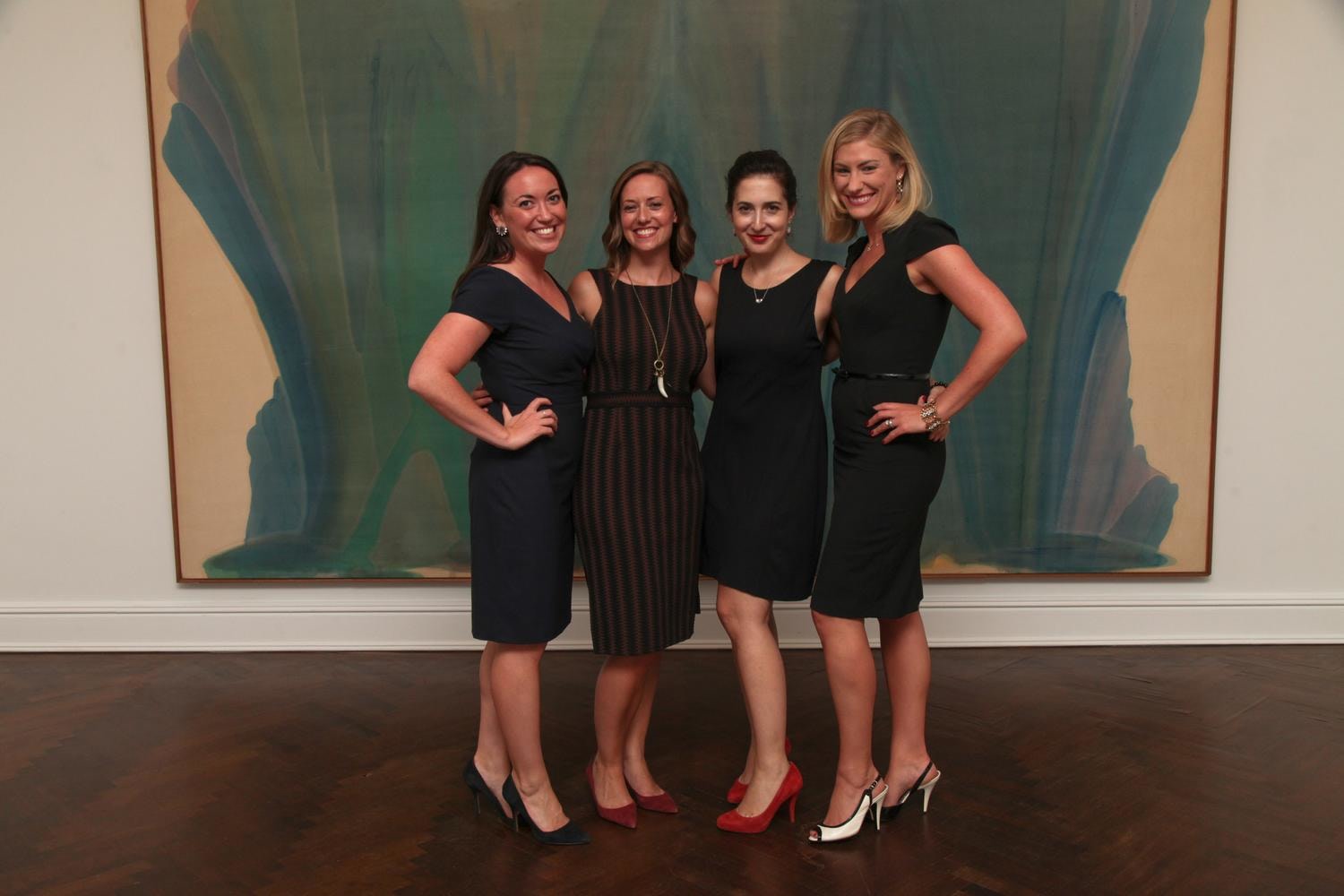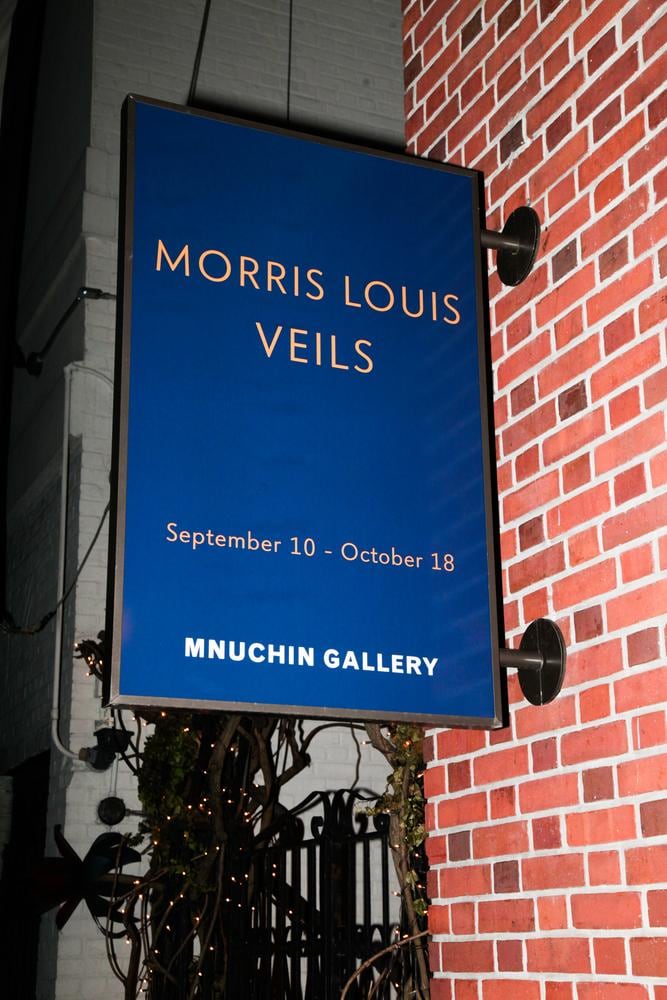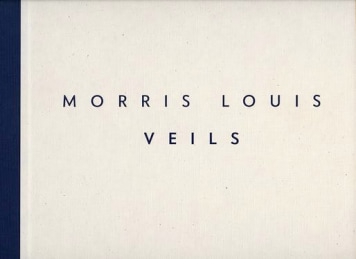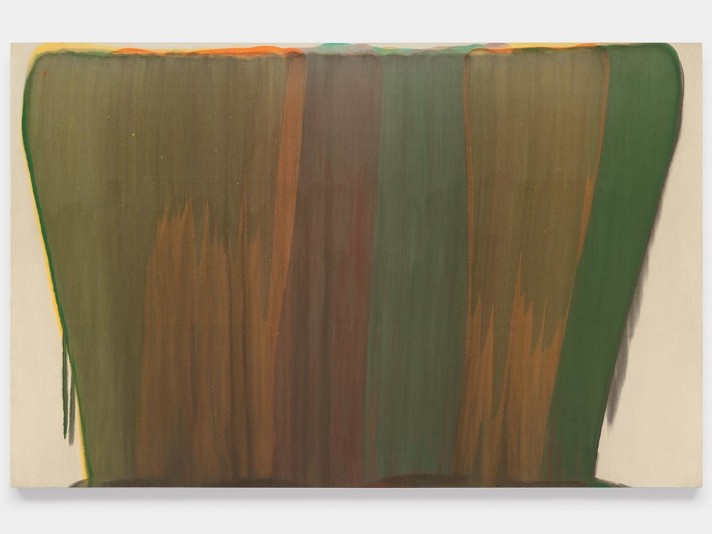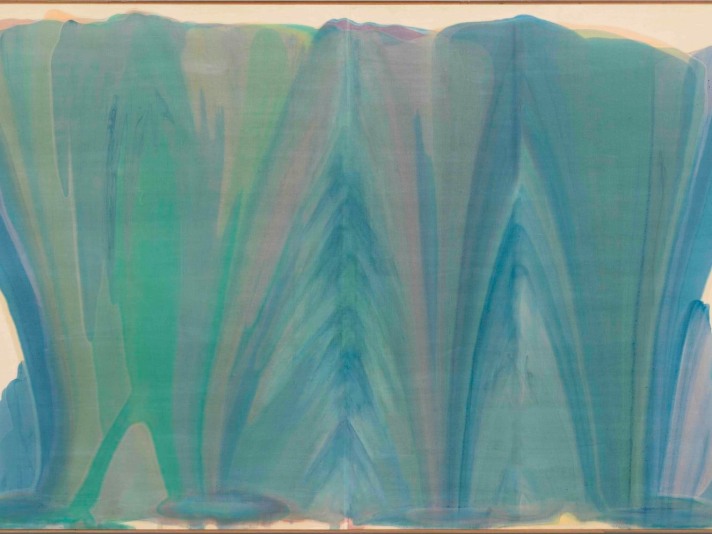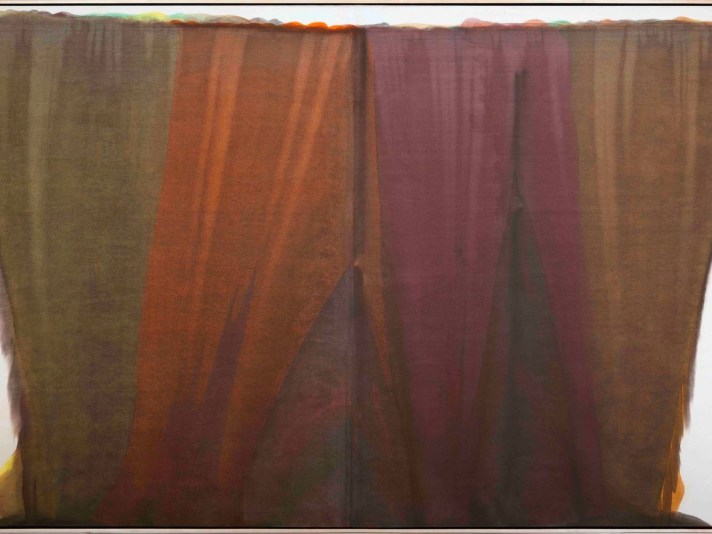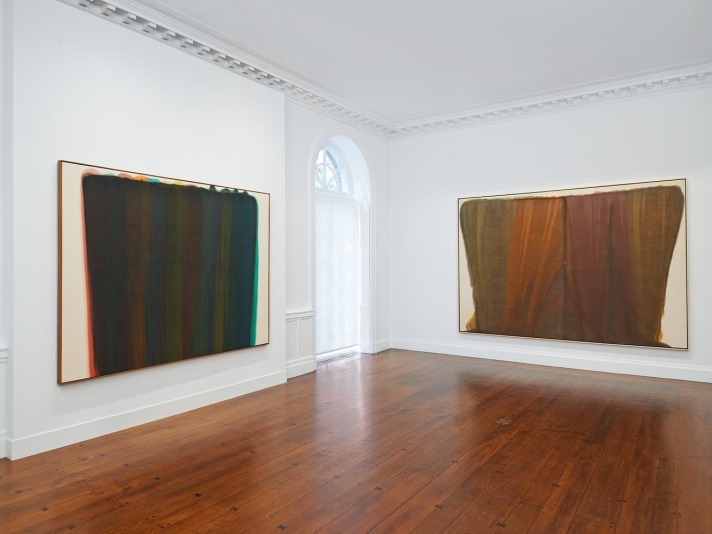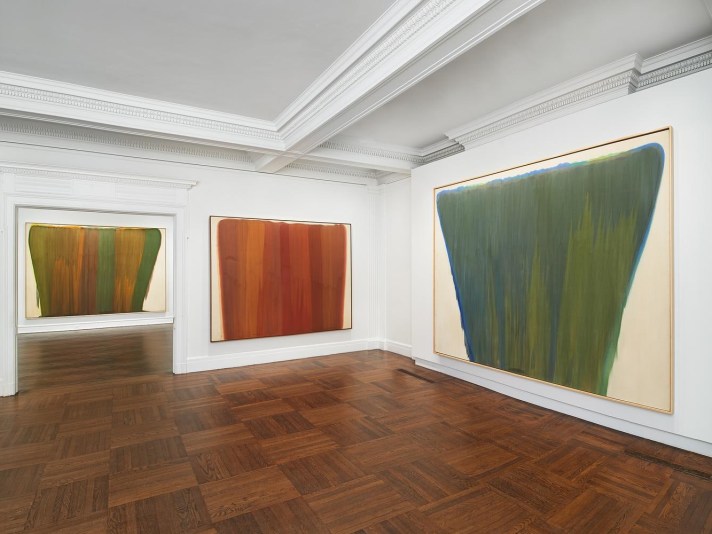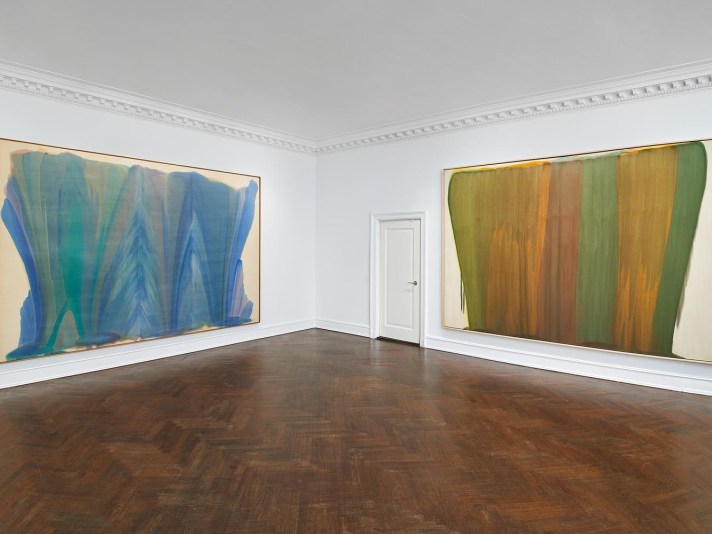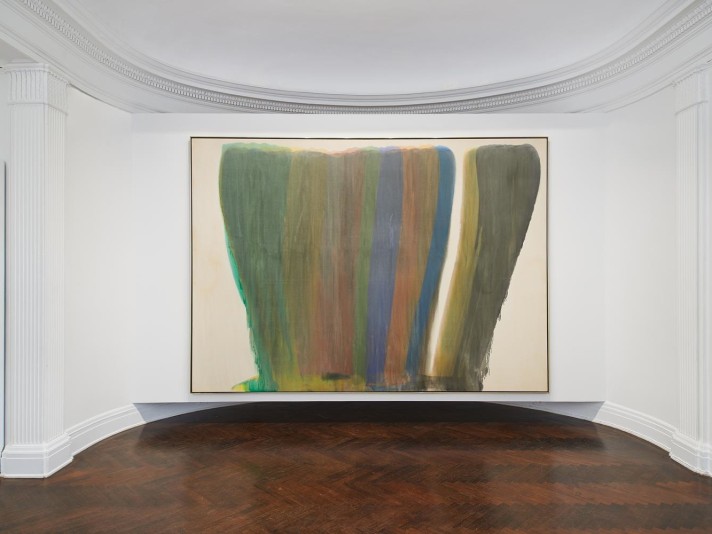Mnuchin Gallery is proud to present Morris Louis: Veils. This will be the first exhibition devoted exclusively to Louis’s breakthrough series in over thirty years. The show will present nine superlative works from the series, including a focused group of Bronze Veils. The exhibition will be on view September 10 through October 18, 2014 with an opening reception on Wednesday, September 10 from 6:00 to 8:00 p.m.
One of the leading figures of the Color Field movement, Louis revolutionized painting with his seamless unification of figure and ground and his pursuit of pure opticality. Begun in 1954 and resumed in 1958-1959, Louis’s Veil paintings—as they were dubbed by William Rubin—marked the fruition of his mature style.
In these works, ethereal layers of luminescent color cascade down the canvas in the veil-like configurations that lend the series its name. Along the edges of each composition, glimpses of single pigments reveal the individual elements that together create the soft glows and mysterious shadows at play in the central body of the works. Though their billowing clouds and subtle currents may bring to mind the natural phenomena present in sea or sky, their imagery is definitively abstract, lacking any tactility or external referents. In this way, the experience of viewing the paintings is distilled to one of the purely visual.
Inspired by the enamel stains of Jackson Pollock and the thin washes of Helen Frankenthaler, Louis created his Veils by pouring Magna acrylic paint thinned with turpentine onto unprimed, unstretched canvases. Forgoing the use of any brush or palette knife, Louis dictated the trajectory of his paint pours with subtle manipulations of his canvas. In this way, he employed both highly refined technique and a limited element of chance, while also rendering the picture a transparent record of the process used to create it. By soaking the synthetic paint directly into the raw canvas, Morris stained the fibers of the cotton itself, thus merging figure and support, and, to the delight of Modernist critic Clement Greenberg, emphasizing the flatness of the picture plane and the essential qualities of the medium.
Louis’s Veil paintings occupy a pivotal place in twentieth-century-art, providing a crucial link between Abstract Expressionism and Minimalism. Eliminating the gestural brushwork and spiritual underpinnings of his Abstract Expressionist predecessors, Louis paved the way for the clean lines, cool conceptualism, and process-based practices of the generations to follow.
A fully-illustrated catalogue featuring an introduction by Diane Upright and essay by Karen Wilkin will accompany the exhibition.


